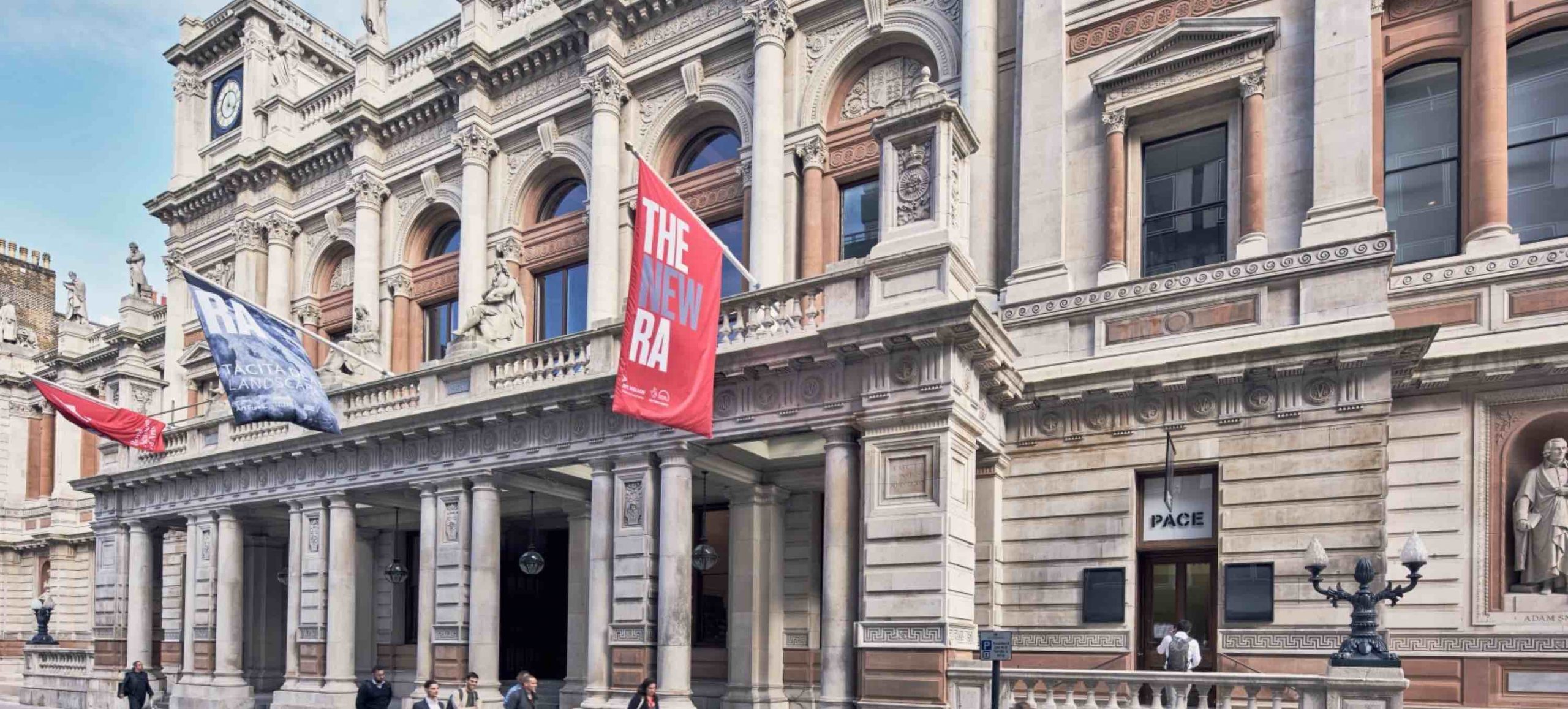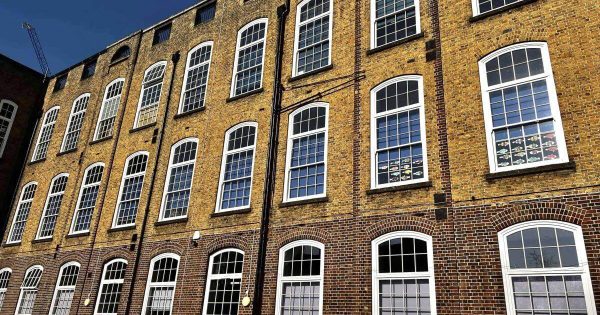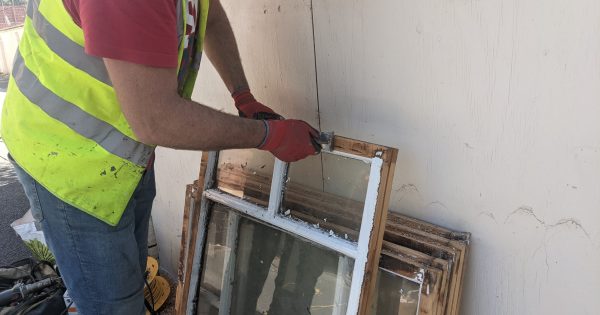Fri Jul 11
When restoring timber sash windows, ventilation is not always the first consideration. However, effective ventilation is critical to the long-term performance of any window system – especially in heritage buildings where the stakes are high for both occupant health and material integrity.
At TRC Contracts, we’ve worked on major restoration projects including Dolphin Square and the Royal Academy of Arts. Across all these sites, one factor remains consistent: the need to support sash window ventilation that works sympathetically with the building’s character while improving indoor air quality, reducing the risk of condensation and minimising long-term timber decay.
Why is sash window ventilation so important?
Sash windows were originally designed to facilitate natural ventilation using passive air movement principles. The traditional sash window encourages airflow through its opposing upper and lower sashes, allowing cooler air to enter through the bottom opening while warm air rises and escapes through the top.
This bidirectional flow ensures a complete room air change over a given period of time, helping regulate indoor temperature, reduce energy consumption and remove stale air and airborne pollutants. In heritage properties, reintroducing or preserving this functionality can help prevent:
- Excess condensation on window panes and timber frames
- Mould growth and poor indoor air quality
- Accelerated timber decay
- The risk of transmission of airborne infections
Whether you’re dealing with a London sash window in a Georgian terrace or a row of timber sash windows in a listed public building, proper ventilation must be central to any window restoration strategy.
The primary purpose of ventilation in restored sash windows
The goal of effective ventilation is not just to bring in fresh air, but to manage different flow regimes within the space. It relies on a good understanding of the flow physics created by:
- The temperature difference of lighter warm air versus heavier colder air
- The sash window configuration, including the height of the closed part of the sash window
- The total window area and the size of the closed panel relative to openings
- Whether ventilation follows a unidirectional or bidirectional flow pattern
These principles guide conservation professionals and architects in choosing natural ventilation strategies that protect the building fabric and meet today’s performance standards.
What happens if sash window ventilation is overlooked?
Without fresh air circulation, especially in double-glazed timber sash windows, the volume of air becomes stale and humid. Warm air generated by occupants and heating systems condenses on cold glass surfaces, particularly in winter, which accelerates paint failure and internal frame damage.
This scenario increases the energy impact of ventilation because building users are forced to open windows wider or longer – leading to heat loss and temperature instability. Worse still, if mechanical ventilation is not available, the entire property risks becoming under-ventilated and uncomfortable.
Traditional vs modern sash window ventilation solutions
There are multiple effective sources of ventilation available when restoring period windows. The right approach depends on the building’s layout, usage patterns, listing status and energy performance goals.
Traditional methods
- Split sash openings: A symmetric sash window configuration allows simultaneous intake of cool air and release of warm air, supporting maximum ventilation flow rate with minimal disruption.
- Trickle vents: Often discouraged in listed buildings but used in sympathetic replacements, these allow a minimum flow rate of air without full window opening.
- Room-level design: Designing around the given closed height of the sash window and room volume allows passive ventilation without affecting appearance.
Modern upgrades
- Discrete mechanical ventilation: Where permitted, this offers stable airflow rates while maintaining window integrity.
- Smart buildings integration: Responsive controls can manage different flow rates and reduce energy consumption during off-peak hours.
- Secondary glazing combinations: TRC Contracts offers secondary glazing that can be paired with heritage windows to retain character while improving the ventilation strategy and acoustic performance.
Each method should be evaluated as part of a full retrofit evaluation of building design, balancing heritage value with occupant comfort.
How do sash window dimensions affect ventilation performance?
The sash window’s size and closed configuration determine the airflow path and rate. A narrow gap at the base can still create a powerful updraft if the upper openings are equally proportioned, allowing warm, buoyant air to rise and exit. The maximum ventilation rate is influenced by both sash position and temperature gradients inside and outside.
This is why TRC Contracts undertakes a full site evaluation before proposing restoration solutions. We assess factors like optimal sash window arrangement, different natural ventilation strategies, and sash material condition before commencing works.
What do conservation standards say about sash window ventilation?
Regulatory frameworks increasingly demand that heritage buildings reduce energy consumption without compromising character. Approved Document F of the Building Regulations sets minimum ventilation flow rate requirements, especially when upgrading or refurbishing.
As part of our role on CHIC frameworks and conservation schemes, TRC Contracts ensures all restored casement windows and timber sash windows meet modern compliance while supporting the primary purpose of ventilation: comfort, health and material preservation.
Can sash window ventilation help reduce airborne infections?
Yes, proper ventilation helps dilute and remove airborne pathogens.
By allowing a consistent volume of air to circulate and exit, open sash windows support healthier indoor environments and reduce the risk of transmission of airborne infections, especially in shared or high-occupancy spaces.
Delivering performance through intelligent heritage restoration
Whether you’re restoring a single London sash window or managing a large portfolio of listed assets, ventilation strategy should never be an afterthought. Every restoration project at TRC Contracts is delivered with an understanding of the building’s needs – combining conservation insight with technical know-how.
We don’t just repair windows. We bring together traditional joinery, modern performance standards and long-term durability to deliver real outcomes for clients and occupants alike.
Talk to us about your next restoration project
If you’re planning to restore period windows, TRC Contracts can support you in designing a sash window ventilation solution that protects both fabric and occupants. From Grade I listed buildings to retrofit commercial schemes, we understand what it takes to deliver compliant, beautiful, and high-performing window restoration.
Explore our timber window restoration services, or speak directly to our team to discuss your specific project requirements.
Discover more with TRC Contracts
Choosing the right window style for your architectural design
Advancements in window restoration techniques
The benefits of triple glazed sash windows in historic buildings





